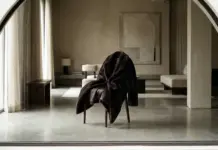This segment examines the intriguing intersection of fashion and technology, ranging from emergent trends to cutting-edge technologies. In response to the current expectations of consumers regarding the items of clothing and accessories they wear, designers and textile manufacturers are integrating wearable technology into the clothing and other accessories that are being developed.
It is possible that the fashion industry is one of the most dynamic industries, constantly embracing change and investigating new methods of producing more fashionable, comfortable, and practical apparel. In the past few years, there has been an interesting coming together of fashion and technology, two connected fields that have been very separate for a long time. The textile and design industry is not behind in integrating smart textiles into their collections, as the expectations for garments and accessories are increasing on a daily basis.
The fashion trends that are reshaping the industry and introducing new concepts and clothing collections are as follows: they enable individuals to express their individuality, dress in more comfortable and practical ways, and even lead healthier lifestyles. The future of fashion is self-sensing smart textiles, biometrically mirrored smart clothing, and wearing technology-integrated clothing that can show information and be controlled.
This comprehensive investigation will examine the evolution of wearable technology, the manner in which textile design is integrating it, and the numerous challenges and complications that arise when these two disciplines are combined. The way we think about and use apparel in the future may change as a result of the new trends and developments we will see.
The Development of Wearable Technology Through Time
The concept of wearable technologies is not novel; however, the advancements in connectivity, sensors, and materials have been expedited in recent years. For instance, the initial calculator watch was a cumbersome device that was almost impossible to wear around the wrist. Google Glass was also uncomfortable to wear, and the initial generation of wearable technology lacked the sophistication to be considered fashion accessories.
Nevertheless, the new era of wearable technology has been initiated by the development of smart fabrics, flexible electronics, and miniature components. Modern fabrics have the capacity to generate electricity through mechanical motion or sunlight, regulate temperatures, and provide health information. These technological advancements have enabled designers to create clothing and accessories that not only satisfy the user’s aesthetic requirements but also satisfy their functional and interactive requirements.
Conductive fabrics were an early example of wearable technology in the fashion industry.
The 1990s were the first time that clothing items were observed to be equipped with materials capable of transmitting electrical signals. This enabled the integration of electronics, including sensors and displays, into the system. For instance, in 1997, Maggie Orth developed an ensemble known as the “Musical Jacket” that employed a conductor fabric to regulate a synthesizer.
Projection technology enabled the implementation of certain development trends in the early 2000s that enabled ensembles to function as backend screens. In 2007, Hussein Chalayan’s “Remote Control Dress” was the first to integrate miniature projectors into its fabric, thereby enabling the article to independently tell a narrative.
The Levi’s + Google Jacquard Smart Jacket
In 2017, Levi’s and Google released a project to introduce a smart jacket that featured touch-sensitive fabric in its sleeve. By contacting the garment as a touch screen, the wearers were able to regulate the operations of the smartphone, utilize the navigation, and play audio.
Clothing Projection Mapping
In the early 2000s, projection technologies were developed, enabling designers to wear clothing that functioned as displays. One of the earliest examples was the Remote Control Dress design by Hussein Chalayan, which was created in 2007 and featured built-in projectors that displayed animated images.
The Integration of Wearable Technology into Textile Design
The latest trends in apparel and accessories, known as smart wear, have been created by the combination of technology and fashion. Sportswear brands have been at the forefront of this trend, incorporating sensors into their garments to monitor the wearer’s heart rate, respiration rate, and other biomarkers. This data can be exported to fitness applications or smartphones, which can provide real-time feedback on performance and training.
Nevertheless, it is still feasible to discern that wearable technology is progressively transitioning from the realm of sports and athletics to that of fashion. The integration of wearable electronics into apparel is gradually becoming a reality, as evidenced by garments that incorporate in-built displays, touch-sensitive controls, and wireless charging. Technology is also being integrated into other products, such as purses and jewelry. These products are capable of controlling audio, receiving notifications, and even monitoring an individual’s location.
The Intel-based My Intelligent Communications Accessory (MICA) bracelet, developed by Opening Ceremony and Intel, is another well-known illustration of the application of wearable technologies in the fashion industry. Bluetooth compatibility, a curved sapphire touch screen, and the capability to receive text messages and notifications directly on the wrist are all features of this fashionable device.
The Jacquard, a smart garment that can recognize touch motions and communicate with a smartphone without the use of cables, is another example of a collaboration between Google and Levi’s. The cloth of the jacket is made of electrical thread, so it can be controlled by motions instead of touching a computer. This technology enables the jacket to play music, access maps, and even request transport.
Wearable technology is being integrated into garments in a variety of methods by designers and textile manufacturers. The industry’s expansion into new areas and the development of increasingly sophisticated products, however, make the future of smart apparel and accessories even more promising.
Obstacles and Factors to Consider
It is not solely a matter of determining how textile manufacturers and designers might integrate wearable technology into apparel and accessories; it is also a matter of determining which aspects of such technology are viable, desirable, invisible, or even feasible. By designing and engineering electronics and printing on the fibers, the delicate components are made flexible, and the vast molecules that comprise the fabrics can be rinsed delicately without causing any damage.
A fundamental concern is the most effective method of incorporating it into the garment or accessory so that it appears to have always been a part of it, rather than an addition that is ungainly and bulbous or that has been pasted on. For instance, this calls for knowledge of materials, apparel construction, and fashion design specialty. It is imperative to integrate sensors and displays into the fabric while maintaining the final garment’s drapability, flexibility, and aesthetic appeal, as the majority of smart functionalities necessitate their continuous integration.
Additionally, another challenge is the preservation of the devices’ functional relevance amid cycles of wear and strain. In order to achieve the intended benefits of the incorporated technology, clothing and accessories must also remain functional and effective through the multiple washes, drying, and typical human body usage.
Data privacy and preservation are among the most critical components. Data privacy and protection are among the most critical components of the SNEF framework’s adoption and implementation. Health informatics is concerned about the collection and storage of data, including biometric features and movement monitoring, as ubiquitous technology becomes more prevalent.
The adoption of wearable technology in textile design and development will also be significantly influenced by the user-friendly concept and ease of use. Clothing and fashion items should be designed to be user-friendly; the concept of controls, interfaces, and connectivity must be integrated. The overall utility of the concept is diminished when wearable technology is not designed correctly, as it becomes a personal annoyance.
In conclusion, the final factors to evaluate when selecting a platform are cost and scalability. The incorporation of these advanced materials and electronic components always carries the danger of increasing the price of the final textile product. For wearables to become popular on the market and with most people, designers and makers need to find a way to cut costs and take advantage of economies of scale.
Therefore, it is imperative that the fashion and textile industries engage in a detailed discussion of these challenges and considerations in order to effectively implement wearable technology. In order to completely actualize the potential of this synergy, the designers, engineers, and material scientists will need to overcome these obstacles as the field continues to advance.
Future Opportunities and Emerging Trends
It is crucial to acknowledge that the future of fashion and textile design is expected to be even more dependent on technology. Currently, scientists and technicians in the field of wearable technology are investigating a variety of innovative technologies and ideas. These include smart fabrics that regenerate from kinetic motion and smart garments that adapt and shape themselves to the wearer’s body.
Innovative products such as thermochromic dyes and conductive pigments are being integrated into fabrics in a brave move. These materials have the potential to accommodate features such as interactive panels, touch-sensitive controls, and color-changing capabilities. Imagine a garment that can change its pattern or hue at your command, or a shirt that truly understands your emotions.
Another trend that is gradually gaining traction is the incorporation of biometric sensors into accessories and apparel, such as shoes. These sensors have the potential to monitor psychological changes, general health, and provide recommendations to the user regarding sleep patterns, nutrition, and exercise, in addition to their use in fitness-related applications. This fashion approach has the potential to revolutionize the conventional approach and reevaluate the concept of fashion and the impact of our garments on our health.
In the field of smart textiles, researchers are investigating the potential of utilizing the apparel article as a display, such as a garment, and providing feedback through contact. Consider a garment that can record and replicate the sensation of a gentle contact, or a pair of mittens that can provide a haptic sensation comparable to that of a specific texture or material. These advancements have the potential to establish the foundation for new and more complex organoleptic or haptic experiences in the fashion industry.
Upon examining the future of fashion technology, it is not difficult to envision that fabrics may develop the ability to self-heal or become conscious and sensitive to the body. To be more specific, one may envision a garment that can adjust its size or temperature to suit the user’s needs, or even alter its appearance. Another option is a fabric that is capable of detecting minor tears and self-repairing them, thereby enhancing the longevity of the garment.
That is why, given the increasing blurring of the distinction between technology and fashion, it is feasible to anticipate that the integration of wearable technology into textile design will become more seamless and organic. It is possible that the future will introduce clothing that monitors our health, interacts with digital residences or appliances, or even enhances our perception of the world. This union of form and content implies a novel perspective on our interaction with the clothing we wear.
In conclusion
Wearable technology is undeniably the future of fashion, as it is a revolutionary approach to transforming the industry for the best. It is reasonable to anticipate that the world will soon experience a new era of smart, interactive, and personalized apparel and accessories, given the current progress made by textile manufacturers and designers. Technology will significantly influence the manner in which individuals and fashion brands demonstrate their identities and interact with their surroundings, as evidenced by the example of social media.



































